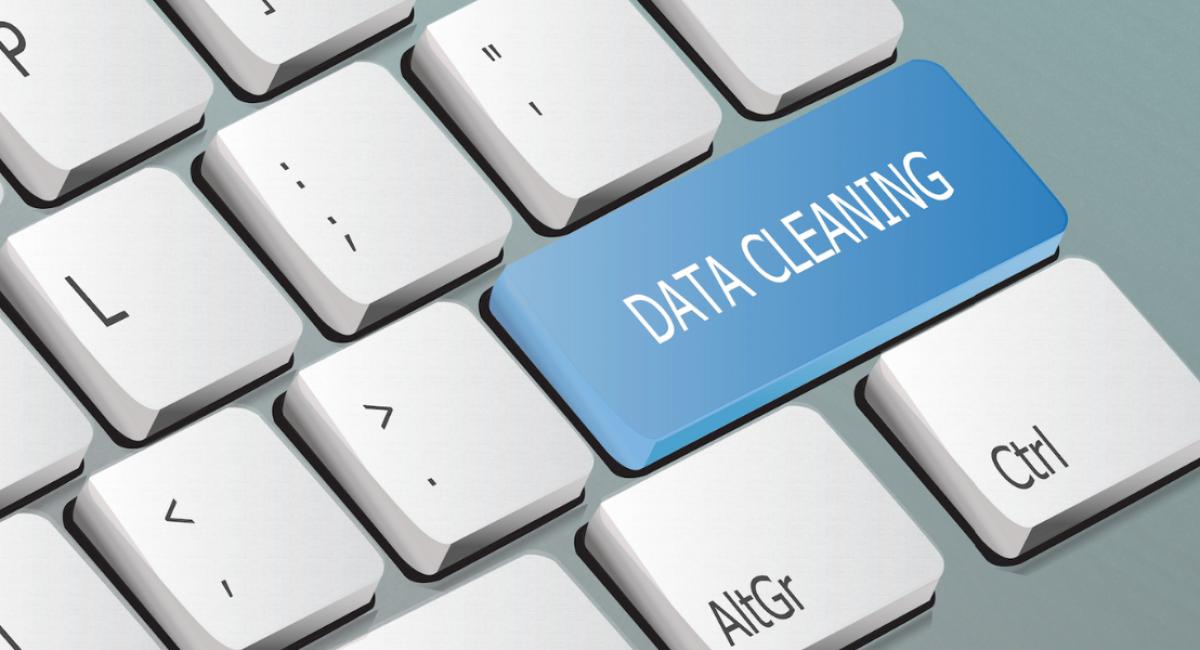[INFOGRAPHIC] Prioritizing Data Cleaning in 2022


Data cleaning is the process of going through your records to delete, correct, reformat, or alter information that is inaccurate to make space for new data. Data is the most important business asset, so ensuring its organized is crucial to support success.
Effective data cleaning aims to make your data free of errors. By prioritizing data cleaning, companies can more accurately measure data, validate metrics, and maximize the reporting potential of data sets.

When systems house datasets that are invalid, outdated, or incomplete, it makes it harder to:
Get the best outcomes by following strategic data cleaning steps and taking actions to maintain your data after the fact. Here are some tips on how to do that:
The main objective of data cleaning is to remove information that is invalid, obsolete, incorrect, duplicated, or error-ridden. Identifying these irrelevant data sets is one of the most important steps in the data cleaning process. Start by reviewing your data to identify the gaps. Note all the irrelevant, incomplete, and duplicate data sets you want to remove. Get rid of this outdated, duplicate information to support more accurate analytics and reports in the future.
Structural issues can occur when transferred data is missing parts, has typos, or uses different namings or formats. This poses a problem because the software is not able to make the connection that the information is the same. For example, if data is entered as both “N/A” and “Not Applicable”, only one of these formats should be chosen for accurate results. Even though we know that it is the same, the software will not read it the same, which will throw off your analytics.
Another example is writing a phone number. 1+688.345.6789 can be read differently than (688) 345-6789, even though we humans can read it the same. Standardized data input methods to avoid these structural mishaps. Choose a default way to input your data to guide anyone who is entering data into your systems.
Sometimes outliers can show you where mistakes are happening in data collection. Other times, they may be a legitimate observation in your data set that should be kept. Knowing when to drop or not drop outliers is important for data cleaning success.
Drop outliers if:
Don't drop outliers if:
Cells that are blank or missing must be identified as part of the data cleaning process. If human error left those cells blank, can you simply input those missing values? Or would it make more sense to just pull out the null data sets? The process you choose depends on the data you have to work with and the results you’re trying to achieve. Either way, identifying and removing gaps in your data will help your business in the long run.
To complete your data cleaning, you’ll need to authenticate the results. Ask yourself these questions to make sure everything lines up:
Bad data can lead to poor business strategies because of incorrect conclusions. It is important to make sure your data is clean so you can create the best outcomes for your organization.
After you complete these 5 steps, your data will be ready to be analyzed as needed. Remember, 100% cleanliness is nearly impossible to achieve, but periodically cleaning your data and working to manage its quality is essential for making informed and accurate business decisions.
Defining a set of rules for organizing and creating data is master data management. The guidelines you put in place should explain how data can be used, when users are allowed to create new data, when users can use pre-existing data, and which information can be thrown out.
Keeping an eye on your data even after data cleaning helps ensure you won’t end up with a mess again in the future. Periodically assess data integrity and ask questions like:
Help your team learn about new data policies to set them up for success. Are there certain formats they should be following to enter data? Are there ways they can check their data for inaccuracies or missing information? What should they do if they think their reporting or analysis is being skewed by dirty data sets? Conducting frequent data validation will help make sure data is maintained and procedures are being followed.
It is essential to understand the importance of data cleaning and the benefits that it has for transforming your data. Clean data is crucial for understanding the growth of your business and how it can affect your development for the future. For more information on data cleaning, visit our webpage or contact us at sales@starfishetl.com.
Fill out the form below and we will contact you